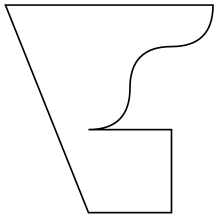The TikZ and PGF Packages
Manual for version 3.1.9a
Libraries
72 SVG-Path Library
TikZ Library svg.path ¶
\usepgflibrary{svg.path} %
LaTeX
and plain
TeX
and pure pgf
\usepgflibrary[svg.path] % ConTeXt and pure pgf
\usetikzlibrary{svg.path} %
LaTeX
and plain
TeX
when using TikZ
\usetikzlibrary[svg.path] % ConTeXt when using TikZ
This library defines a command that allows you to specify a path
using the svg-syntax.
\pgfpathsvg{⟨path⟩} ¶
This command extends the current path by a ⟨path⟩ given in the svg-path-data syntax. This syntax is described in detail in Section 8.3 of the svg-specification, Version 1.1.
In principle, the complete syntax is supported and the library just provides a parser and a mapping to basic layer commands. For instance, M 0 10 is mapped to \pgfpathmoveto{\pgfpoint{0pt}{10pt}}. There are, however, a few things to be aware of:
• The computation underlying the arc commands A and a are not numerically stable, which may result in quite imprecise arcs. Bézier curves, both quadratic and cubic, are not affected, neither are arcs spanning degrees that are multiples of \(90^{\circ }\).
• The dimensionless units of svg are always interpreted as points (pt). This is a problem with paths like M 20000 0, which will raise an error message since TeX cannot handle dimensions larger than about 16 000 points.
• All coordinate and canvas transformations apply to the path in the usual fashion.
• The \pgfpathsvg command can be freely intermixed with other path commands.

\usepgflibrary {svg.path}
\begin{pgfpicture}
\pgfpathsvg{M
0
0
l
20
0
0
20
-20
0
q
10
0
10
10
t
10
10
10
10
h
-50
z}
\pgfusepath{stroke}
\end{pgfpicture}